Archivo de noticias y eventos
651 - 700 de un total de 1805
También puede acceder a la lista de noticias publicadas en los medios relacionadas con el Instituto de Astrofísica de Andalucía - CSIC.
Pages

|
05/05/2016 - 12:30
Formación Estelar: ¿podemos acotar el problema? Mientras que la evolución estelar conforma un cuerpo teórico bien estructurado, incluyendo aquí las últimas fases de la misma, la formación estelar está lejos de admitir una formulación teórica predictiva que permita, conociendo las propiedades físicas de la nube molecular, pergeñar las propiedades de la futura población estelar naciente. Dr. Emilio Alfaro |

|
28/04/2016 - 12:30
The lifetime dilemma of evaporating black holes The standard view is that black holes exist, maybe not with all the properties of strict black holes in classical General Relativity, but sufficiently close to them that one does not need worrying in the astrophysical practice. Dr. Carlos Barceló |

|
21/04/2016 - 12:30
Colloquium on ERC's proposals Colloquium on ERC's proposals Drs. Alejandro Luque & Rainer Schoedel |

|
18/04/2016 - 12:30
Issues in star and cluster formation The upper mass stellar initial mass function is similar to the mass function of young star clusters. I argue that this is a basic result expected when gravitational focusing on scales much larger than the Jeans length operate. I will also present recent VLBI studies of Orion which yield new distance estimates. Prof. Lee Hartmann |

|
13/04/2016 - 12:30
Young brown dwarfs: exploring the bottom of the Initial Mass Function Brown dwarfs are the objects that bridge the realms of stars and planets, making them important benchmarks for testing star and planet formation theories. In particular, studies of brown dwarfs at young ages are crucial for understanding the mass dependence in the formation and early evolution of stars. Lda. Koraljka Muzic |

|
13/04/2016
El IAA participa en Desgranando Ciencia El evento de divulgación Desgranando ciencia incluye, en esta cuarta edición, un completo programa que abarca muy diversas ramas científicas, entre ellas la astrofísica. |

|
12/04/2016
El Instituto de Astrofísica de Andalucía participa en la feria del libro: programa de actividades Este año, la feria del libro está dedicada a la divulgación de la ciencia. El IAA y el Parque de las Ciencias, con la colaboración de Hablando de Ciencia, han preparado un programa de actividades que tendrán lugar en la carpa de la ciencia |

|
07/04/2016 - 12:30
CARMENES as a precursor for HIRES@E-ELT: First results at the telescope CARMENES (Calar Alto high-Resolution search for M dwarfs with Exoearths with Near-infrared and optical Échelle Spectrographs) is the next generation instrument built for the 3.5m telescope at the Centro Astronómico Hispano-Alemán (Calar Alto Observatory; CAHA, Almería, Spain). Dr. Pedro Amado |
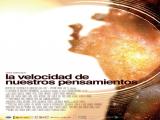
|
31/03/2016 - 19:00
Presentación del documental "La velocidad de nuestros pensamientos" Presentación y proyección de fragmentos del documental sobre la luz titulado "La velocidad de nuestros pensamientos". Emilio J. García |

|
31/03/2016 - 12:30
Are LIGO data connected? The analysis of ultra-precise data of stellar light variations observed with satellites (CoRoT, Kepler, SoHO, etc.) has revealed some unexpected results that cannot be explained by theory. Prof. Rafael Garrido/Dr. Javier Pascual |

|
17/03/2016 - 12:30
OCTOCAM: A fast multi-channel imager and spectrograph proposed for the Gemini Observatory OCTOCAM has been proposed to the Gemini observatory as a workhorse imager and spectrograph that will fulfill the needs of a large number of research areas in the 2020s. Dr. Antonio de Ugarte |

|
10/03/2016 - 12:30
Shaking the grounds of unification: are type 1 and type 2 AGN intrinsically different? The simplest standard unified models of Active Galactic Nuclei (AGN), put forward more than 30 years ago, postulate that the diversity of observed properties of AGN can be largely explained as a viewing angle effect resulting in anisotropic nuclear obscuration. A key ingredient of these models is a homogeneous distribution of dust and gas located at tens of parsecs that obscures the AGN nuclear region from certain lines-of-sight (the ‘torus’).... Dr. Silvia Mateos |

|
04/03/2016 - 12:30
Multiwavelength studies of massive stars We will review the importance of multi-wavelength studies of massive stars and how each of the wavelength ranges may provide crucial and complementary information to characterize these objects. We will discuss the consistency of UV through radio studies of O stars, LBVs and WRs as well as the reliability of analyses based on a limited wavelength region. Dr. Francisco Najarro |

|
01/03/2016 - 12:30
Massive galaxy clusters: from relaxed to highly substructured Galaxy clusters are important in cosmology to set constraints on various parameters, but they are also intrinsically interesting, since they allow to study many physical processes. The DAFT/FADA survey of 90 clusters in the redshift range 0.4<z<0.9 has allowed us to analyse several aspects of clusters, linked with their formation. We will present here our search for substructuring and its variation with redshift. For subsamples of clusters... Florence Durret |

|
25/02/2016 - 19:00
¡Rayos y centellas! Un recorrido relámpago por la electricidad atmosférica en la Tierra y en el Sistema Solar Hace tres siglos, el descubrimiento de la naturaleza eléctrica de los rayos afianzó nuestra confianza en que la naturaleza podía ser comprendida mediante la investigación científica. Ahora sabemos también que los rayos afectan a la composición de nuestra atmósfera y que, además de en la Tierra, existen en Júpiter, Saturno y tal vez Venus, Urano y Neptuno. Alejandro Luque |

|
25/02/2016 - 12:30
Progress on the construction of the South African SKA Pathfinder (MeerKAT) and the African VLBI Network &The Australian Square Kilometre Array Pathfinder (ASKAP) Progress on the construction of the South African SKA Pathfinder (MeerKAT) and the African VLBI Network &The Australian Square Kilometre Array Pathfinder (ASKAP) Drs. Tracy Cheetham & Antony Schinckel |

|
23/02/2016
Square Kilometre Array (SKA) Industry Day Hoy tendrá lugar en Madrid la jornada informativa "Square Kilometre Array (SKA) Industry Day" |

|
18/02/2016 - 12:30
Experimental simulation of the atmospheric ablation of cosmic dust particles: implications for HPLA radar and lidar observations The inner solar system is full of interplanetary dust particles (IDPs) originating from cometary trails and collisions between asteroids. The entry and evaporation of IDPs in planetary atmospheres is related to a variety of phenomena including formation of mesospheric metal layers and clouds, and stratospheric aerosol chemistry. Dr. Juan Carlos Gómez Martín |
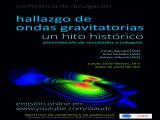
|
17/02/2016
¿Qué son las ondas gravitatorias, y por qué su hallazgo ha sido un hito histórico? Mañana a las 19 h se celebrará en el salón de actos del Instituto de Astrofísica de Andalucía (IAA) una sesión abierta al público para conocer esta nueva ventana para explorar el universo. |

|
11/02/2016 - 12:30
The role of magnetic field for stability in relativistic jets Relativistic jets have been observed or postulated in various astrophysical sources, including active galactic nuclei, microquasars in the galaxy and gamma-ray bursts. There are many unsolved problems related to the relativistic jets, for example, formation & acceelration, collimation, and long-term stability. The most promising mechanisms for producing and accelerating relativistic jets, and maintaining collimated structure of relativistic... Dr. Yosuke Mizuno |

|
04/02/2016 - 12:30
ORISON un proyecto de instrumentación astronómica estratosférica ORISON es un proyecto financiado por el H2020 de la Unión Europea, dentro de la convocatoria INFRASUPP2, coordinado desde el IAA. Su objetivo principal es estudiar la viabilidad de una infraestructura de investigación basada en globos que permitan poner, a costes razonables, instrumentación de no demasiado peso (<500 kg) en plataformas estabilizadas, a alturas estratosféricas, del orden de 40km sobre el suelo, con objeto de conseguir metas... Dr. Jose Luis Ortíz |
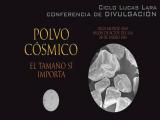
|
28/01/2016 - 19:00
Polvo Cósmico. El tamaño sí importa En astronomía, cuando hablamos de polvo nos referimos a pequeñas partículas en estado sólido compuestas, por ejemplo, de silicatos o de distintos tipos de carbón. Podemos hallar estas partículas de polvo en muy diversos escenarios en el universo, donde su interacción con la luz estelar nos proporciona imágenes espectaculares. Olga Muñoz |

|
28/01/2016 - 12:30
Spectro-interferometry study of red supergiants Red supergiant stars (RSGs) are cool and massive stars that evolve toward Wolf-Rayet stars and supernovae. They have extended atmospheres and strong stellar winds, which lead to significant mass loss. Currently, the mechanisms that explain the large observed atmospheric extensions are open to debate. The estimation of the fundamental parameters of these stars and their location in the HR diagram are very important for calibrating the... Dr. Belén Arroyo-Torres |
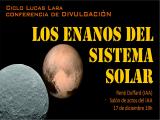
|
17/12/2015 - 18:00
Los enanos del Sistema Solar En 2006 la Unión Astronomica Internacional definió el término planeta y planeta enano. Nuestro sistema solar ahora está compuesto de 8 planetas y 5 planetas enanos que son Ceres, Plutón, Eris, Makemake y Haumea. Esta charla estará centrada en la descripción de estos cuerpos, los candidatos a planetas enanos que existen y discutiremos la increíble diversidad que hay entre estos cuerpos. Durante 2015 dos naves robot obtuvieron datos sobre Plutón y... René Duffard |

|
14/12/2015 - 11:30
Challenges of the Doppler technique in the presence of stellar noise for the detection of Earth-like exoplanets The Doppler method is still the most efficient one in detecting exoplanets around nearby stars which are amenable for further characterization. In particular, planets as small as the Earth can in principle be detected in hot orbits around sun-like stars (G and K dwarfs), and warm to temperate orbits around M-dwarfs (M<0.5 sun) in orbital periods from a few days to tens of days. Unfortunately, these time-scales are plagued with structured... Dr. Guillem Anglada-Escude |

|
03/12/2015 - 13:30
Presence and future of adaptive optics at the ESO VLT In this brief talk I will present the current and near-future adaptive optics (AO) capabilities of ESO's VLT. I will report on a recent meeting at ESO, where we discussed science cases for future AO instrumentation at the VLT in the era of the E-ELT. Probably within the next year, the science cases for a 3rd generation AO instrument (to arrive at the VLT in ~ 2025) will be laid down in a white paper. The goal of my talk is to get the IAA... Rainer Schoedel |

|
27/11/2015
La red española de telescopios robóticos BOOTES inaugura su estación en México El proyecto, liderado por astrónomos del Instituto de Astrofísica de Andalucía (IAA-CSIC), completa con el telescopio Javier Gorosabel su cobertura del cielo en el hemisferio Norte |

|
26/11/2015 - 18:00
Marte: emisiones de metano, de agua y de noticias En los últimos 12 meses se han acumulado varias noticias científicas sobre Marte de gran impacto y en cierta medida inesperadas, como el (re)descubrimiento de metano en su atmósfera, y la muy probable existencia de agua fundida en el subsuelo. Además se han sucedido propuestas pseudocientíficas como Mars One y el estreno de la esperada película "Marte" (The Martian), vestidas ambas de un aparente realismo científico. Miguel Ángel López Valverde |

|
26/11/2015 - 13:30
Following the posterior with the ALHAMBRA survey The probability distribution functions (PDFs) provided by photometric redshift codes such as BPZ are a powerful tool for galaxy evolution studies. Despite of their potential, only a few studies in the literature attempt to use the full PDFs in their analysis and we are still learning how to make the most of them. We present the latests PDF advances from the ALHAMBRA survey, focusing in the estimation of the B-band luminosity function. We... Carlos López-Sanjuan |

|
12/11/2015 - 13:30
High Spatial Resolution 2D Nebular Abundances in Disk Galaxies Galaxies evolve through the changes that face their various components such as the gas, dust, stars, and dark matter. Gas and dust are prime ingredients for the formation of new stars, and thereafter the massive stars newly formed will quickly modify the chemical composition of galaxies whereas low mass stars will take more time to contribute to the interstellar gas enrichment. Beside the stars, other processes occurring during the galaxies... Laurie Rousseau-Nepton |
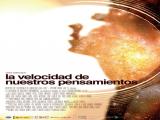
|
12/11/2015
Estreno del documental "La velocidad de nuestros pensamientos" Esta tarde tendrá lugar el estreno del documental "La velocidad de nuestros pensamientos", escrito y producido por Emilio J García (IAA-CSIC) y Nacho Chueca, de Lipssync Media Lab, con motivo de la celebración en 2015 del Año Internacional de la Luz. El estreno, que tendrá lugar a las 21 h en la Biblioteca de Andalucía, forma parte de una serie de actividades de divulgación organizadas por el Instituto de Astrofísica de Andalucía para celebrar... |

|
29/10/2015 - 18:00
Color y vida ¿Qué es el color? ¿Cómo se produce el color en la naturaleza? ¿Cómo usan el color los seres vivos? Veremos qué es y cómo se percibe el color: un poco de física, química, anatomía, fisiología, neurología y psicología son necesarias para entender cabalmente el color. Enrique Pérez Jiménez |

|
08/10/2015 - 14:30
Dissecting a rare galaxy merger (the Hummingbird) with radio and mm-observations The Bird is a luminous infrared galaxy product of a triple merger. Previous infrared observations have shown that the ongoing star formation in the least massive of the components (the head) outshines that of the mprimary nuclei (the heart and the body). This clashes with the commonly accepted major merger scenario in which the SF is expected to be higher in central compact regions. Here I will present preliminary results... Cristina Romero-Cañizales |

|
24/09/2015 - 14:30
Test In Space, your opportunity to experiment in orbit Traditionally, experimentation in space has consisted in limited, expensive, long-term and complicated projects with hard requirements and restrictions. Currently, new space increases the possibilities to experiment in space for researchers from all kind of fields and, with TEST IN SPACE, this is also simple and fast. If you are interested in investigation under real space environment, you can just propose it to TEST IN SPACE. TEST IN SPACE... tbd |

|
17/09/2015 - 14:30
Baryon Acoustic Oscillations and the Expansion History of the Universe The tiny inhomogeneities left over from the inflationary phase seeded the early Universe with primordial density perturbations. The photon-baryon fluid reacted to these perturbations by forming spherical pressure waves known as baryon acoustic oscillations (BAO). These waves propagated through the primordial plasma until the Universe became transparent to radiation, effectively stopping the dragging of the baryons by the photons. This left... A. J. Cuesta, on behalf of the BOSS Collaboration |

|
11/09/2015 - 14:30
Untold Stories of Andromeda: A Multi-wavelength View of The Nuclear Environment in M31 The Andromeda galaxy (M31), which harbors the nearest LINER and the closest stellar bulge accessible in the optical, is an ideal laboratory for studying the physical regulation of galactic nuclei, and in turn the co-evolution of super-massive black holes and their host galaxies. I will provide an overview of the stellar and interstellar components of the M31 bulge, as well as its dormant but otherwise well-known SMBH, M31*. I will introduce... Prof. Zhiyuan Li |

|
11/08/2015 - 13/08/2015
XXIX IAU General Assembly, Focus Meeting 10: Stellar explosions in an ever-changing environment Hawaii |
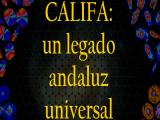
|
25/06/2015 - 17:00
CALIFA: un legado andaluz universal CALIFA es un catografiado de 600 galaxias cercanas que se ha desarrollado en el modo de campo integral con el instrumento PMAS/PPaK instalado en el telescopio 3.5m de Calar Alto (Almería). CALIFA es un proyecto pionero y constituye una muestra ideal para investigar como se forman los bulbos y discos de las galaxias. Los datos obtenidos con CALIFA proporcionan además un gran legado para la comunidad astronómica, y sitúan a CALIFA en una posición... Rosa González Delgado |

|
24/06/2015 - 16:30
Autoorganización, propiedades emergentes y algoritmos genéticos La naturaleza tiene una forma muy eficaz de producir individuos capaces de adaptarse a ambientes cambiantes y de resolver problemas complejos. En esta charla hablaremos de como podemos inspirarnos en esto para realizar algoritmos que resuelvan tareas que de otro modo serían imposibles, y por el contrario, también veremos como con reglas muy sencillas podernos replicar el comportamiento de sistema muy complejos. Pablo Galindo Salgado Sala de Juntas del Instituto de Astrofísica de Andalucía (IAA-CSIC) |

|
17/06/2015 - 14:30
Into Darkness: the seek for pulsars in the Galactic Centre Pulsars are highly-magnetized rotating neutron stars that emit beams of electromagnetic emission. They are unique astronomical laboratories, not only because they are the most magnetized, densest, directly-observable objects in the Universe, but also because they act as extremely precise clocks located all over the Galaxy. The variety of science enabled by pulsars is very broad, from, e.g., limits on the Equation-of-... Pablo Torne |

|
17/06/2015 - 09:00
Presentación y visita guiada al laboratorio de scattering del IAA En el laboratorio CoDuLab (Cosmic Dust Laboratory) investigamos algunas propiedades físicas del polvo que podemos encontrar en atmósferas planetarias y cometarias. En esta charla presentaremos el laboratorio, la motivación del mismo y algunas de las muestras con las que trabajamos. Una vez acabada la charla se hará una visita al mismo Jesús Escobar Cerezo Sala de Juntas del Nuevo Edificio (IAA-CSIC) |

|
15/06/2015 - 14:30
The influence of dynamics on airglow and constituents in the terrestrial mesopause region In the terrestrial atmosphere, the mesopause region (~90 km height) is a transition region between the inviscid lower/middle atmosphere and the geomagnetically forced geospace. It is a region of strong dynamical forcing and where several constituents vary strongly with height one of which is atomic oxygen. Airglow, which is the result of naturally occurring chemiluminescence in the mesopause region involving exothermic reactions associated... Prof. William Ward |

|
11/06/2015 - 14:30
Ubiquitous magnetic flux emergence in the Sun: a fundamental process The fundamental process of magnetic flux emergence happens continuously and everywhere over the solar surface, hence the ubiquitousness. No matter which spatial (granular, supergranular, active region) and temporal scale we look at buoyant magnetic field coming from the convection zone pierces the photosphere in the form of two opposite polarities and travels upwards through the solar atmosphere. We will describe the general characteristics... Ada Ortiz Carbonell |

|
09/06/2015 - 14:30
Massive Star Formation at the Puerto Varas Workshop The recent decades have witnessed major advances in our understanding of the formation of solar-mass stars. However, the formation mechanisms of stars at the extremes of the mass range, that is, on one hand very massive stars and in the other brown dwarfs, remain poorly understood. I will summarize the main results presented in a recent meeting on massive star formation that took place in Puerto Varas,... Luis F. Rodriguez |

|
28/05/2015 - 17:00
Historia del descubrimiento de la gestación de un jet protoestelar Hace dieciocho años descubrimos de forma casual una protoestrella, o embrión estelar, con unas diez veces más masa que el Sol. José María Torrelles |

|
28/05/2015 - 14:30
Observing the onset of outflow collimation in a massive protostar: assembling the puzzle The current paradigm of star formation through accretion disks, and magnetohydrodynamically driven gas ejections, predicts the development of collimated outflows, rather than expansion without any preferential direction. We present radio continuum observations of the massive protostar W75N(B)-VLA 2, showing that it is a thermal, collimated ionized wind and that it has evolved in 18 years from a compact source into an elongated one. This... José María Torrelles |

|
24/05/2015 - 28/05/2015
Polarization in the Sun, the Solar System, and Beyond Granada |

|
21/05/2015 - 22/05/2015
Amazing science with CARMENES Granada |

|
18/05/2015 - 23/05/2015
3rd SOLARNET School on "Solar Magnetic Fields: Modeling and Measuring Techniques" Granada |

|
14/05/2015 - 14:30
ASKAP Commissioning and Early Science The Australian Square Kilometre Array Pathfinder (ASKAP) is a new generation low frequency (700-1800 MHz) interferometer capable of a wide instantaneous field of view of 30 square degrees, which is realised with the Phased Array Feed (PAF) technology. The first stage of the instrument, which consists of 6 first generation PAFs and is called Boolardy Enigeering Test Array (BETA), has been brought into operations... Maxim Voronkov |